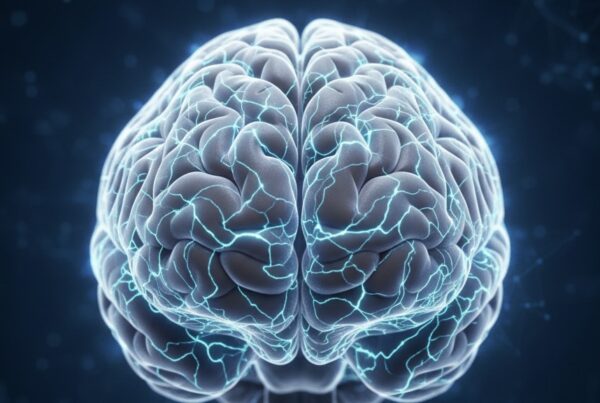Cognitive Emotional Monitoring (CEM) has now become part of the main innovation.There is a brain., data-driven neurotechnology platform developed to understand and improve the performance of the human brain. Through a system of scientific analysis and real-time monitoring, adaBrain helps individuals and organizations recognize their cognitive and emotional states objectively, ranging from levels of focus to stress and burnout.
By integrating technologyQEEG (Quantitative EEG), neurocognitive analysis, and personalized interventions, adaBrain makes CEM a tool capable of assessing brain balance with high precision. This is a real step toward a new era.neuroeducationand science-based mental health.
adaBrain Innovation: Measuring the Brain to Understand Oneself
In a fast-paced world, stress and mental fatigue are often not noticed, thereby reducing performance. AdaBrain offers a solution with CEM, a system that scientifically monitors brain activity to detect signs of mental fatigue, decreased focus, and emotional imbalance.
QEEG Technology: A Brain That Can Be Read Objectively
QEEG becomes the foundation of the CEM adaBrain system. This technology records the brain's electrical activity through non-invasive sensors placed at key points such as Fp1, Fp2, F3, F4, Fz, and Cz. The data produced is then translated into a brain activity map that shows areas dominated by stress, focus, or fatigue.
Brain waves such as Alpha, Beta, and Gamma are analyzed to understand a person's cognitive (the way of thinking) and emotional (the way of feeling) conditions. For example, an increase in Beta waves can indicate high stress, while Alpha asymmetry in the frontal area could indicate a depressive mood.
How adaBrain Performs Cognitive Emotional Monitoring
The CEM method at adaBrain consists of five measurable and interconnected scientific stages. All processes are carried out by a team of professionals with global neurotechnology standards.
1. QEEG Recording – Brain Activity Recording
The initial stage is carried out by recording brain waves to map patterns of cognitive and emotional activity. From this data, adaBrain can see the areas of the brain that are active when someone is thinking, making decisions, or feeling stressed.
2. Cognitive Mapping – Analysis of Cognitive Function
After recording, the system analyzes the ability to focus, working memory, and the speed of information processing. The results of the analysis provide an indication of how optimally a person's brain functions in daily activities, learning, or work.
3. Emotional Mapping – Analysis of Emotional Condition
This section is the heart of Cognitive Emotional Monitoring. adaBrain maps stress levels, burnout risk, anxiety, and even impulsivity through a combination of QEEG and internal analytical algorithms. The results are presented inCEM Score, which describes the overall balance of the brain.
4. Monitoring Longitudinal – Periodic Monitoring
Unlike a one-shot psychological test, the CEM at adaBrain is longitudinal. That means the measurement results can be compared over time to observe progress and the effectiveness of the interventions that were carried out. In this way, individuals or organizations can monitor brain health on an ongoing basis.
5. Personalized Intervention – Specific Intervention
Each CEM result serves as the basis for personalized intervention recommendations.
- For students, there is a module.brain training, focus management, danmotivation to learn.
- There is a program for employees.neurocoaching, sleep optimization, danstress management.
- Meanwhile, for companies, adaBrain helps intalent mappingandPositioning based on brain function.
Benefits of CEM for Individuals and Organizations
Cognitive Emotional Monitoring is not only about data, but about science-based behavioral transformation. For students, CEM helps maintain concentration and prevent fatigue from studying. For workers, this technology detects stress and burnout before it disrupts performance. Whereas for organizations, the CEM results can be used to improve productivity, employee well-being, and leadership effectiveness.
CEM for Education
With CEM data, teachers and counselors can understand students' learning styles based on brain activity, not just test results. This supports the approach.neuroeducation, where learning is tailored to the brain condition of each individual.
CEM for the world of work
In a professional context, adaBrain helps HR and managers understand their team's mental state. A program for monitoring stress and emotional balance can prevent collective fatigue (organizational fatigue) and increase work motivation.
Cognitive Emotional Monitoring as the Future of Indonesian Neurotechnology
Through adaBrain, brain-monitoring technology that used to be limited to laboratories can now be accessed more widely and conveniently. This platform bridges the gap between science and everyday life, enabling anyone to understand the brain's condition in scientific terms.
In addition to detecting stress and burnout, CEM also helps users findbaseline mentalthey. From here, the journey to improve brain performance begins with real data, not assumptions.
With the support of a team of experts in neuroscience, psychology, and technology, adaBrain makes Cognitive Emotional Monitoring a concrete step toward a future in which every individual canto work, learn, and live with a healthier and more balanced brain..
About adaBrain
adaBrain is part of the ecosystem.Insimen SuperApp, which focuses on the development of neurotechnology-based solutions, adaptive learning, and digital mental health.
Through this platform, the public can carry out brain monitoring, neurocoaching, and integrated cognitive training.
Cognitive Emotional Monitoring from adaBrain opens a new chapter in understanding how the human brain works. With this technology, the balance between the mind and emotions is no longer an abstract concept but something that can be measured, monitored, and improved.















